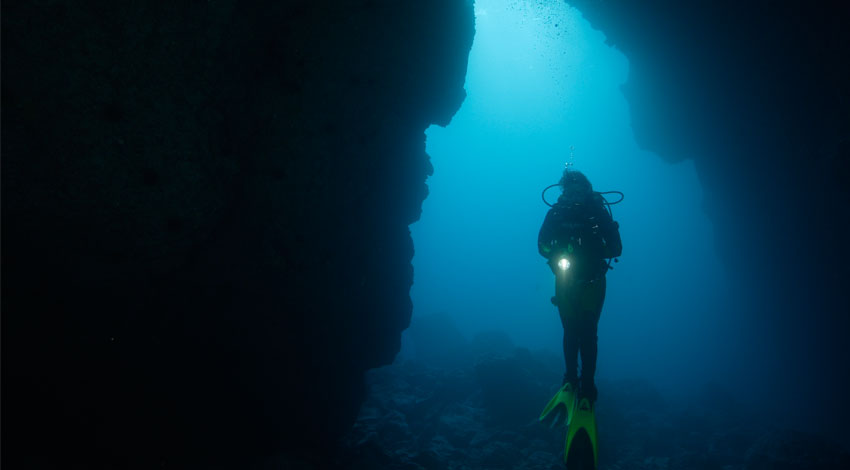The waters that surround the Madeira Archipelago are a real sea of opportunities all throughout the year.

In February, the north of Europe faces harsh winter while in the Mediterranean the average temperature of the sea falls to 12 degrees. And in northern Europe, the seawater is even colder.
But in Madeira, the Atlantic is much warmer. Water temperature varies between ‘a minimum of 17 degrees in March and a maximum of 25 degrees in September’ which makes the island a ‘destination of excellence for nautical activities’ be it at the surface or diving to the depths of the ocean. So contends biologist Mafalda Freitas, head of Funchal’s Marine Biology Station.
The Nature Reserve at Garajau, a place with a considerable population of groupers, Baixa das Moreiras with its large schools and anemones, and Sítio do Galo, where the occasional seal lion drops by are some of the most sought places for diving. Other than these there are also five places ideal for wreck diving at ‘Ponta de São Lourenço (sítio da Badejeira), behind Pontinha, at Madalena do Mar and two in Porto Santo’, with the Madeirense and the Pereira D’Eça corvette. The islets around the golden island, as it is known, are another ‘real oasis gathering many different species of fish’ says Mafalda Freitas.
Clear waters, little movement in some sites and the pebble stones that adorn most of the island’s beaches and entice the curiosity of those who visit are some of the main factors pulling people in for an adventure at the sea of Madeira.
And because of the temperature, amongst other things, there is a real sea of opportunities to be explored: surfing, windsurfing, rowing, sailing, swimming in open waters and stand up paddle being are some of the nautical activities that can be enjoyed all year round in Madeira.
All day long, several Catamarans depart from the island’s several harbours, whale watching being their purpose. According to Mafalda Freitas ‘there are 29 species’ of cetaceans from whales to dolphins and sea lions, a species endemic to the archipelago and for which there is a rehabilitation unit in the Desertas island.
No matter how many people visit the archipelago, the waters surrounding these islands have a wealth and variety waiting to be explored by those who visit them, leaving those people with a vivid feel of the sea, the sweet sea.














